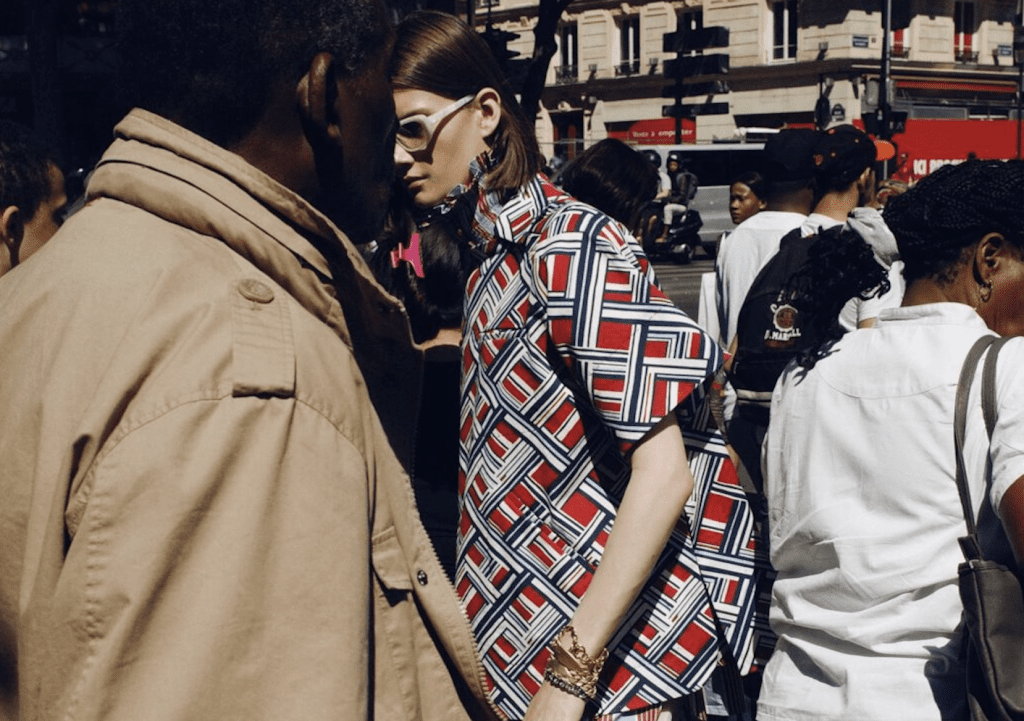Saks Fifth Avenue, and the American arms of Louis Vuitton, Loro Piana, Gucci, Prada, and Brunello Cucinelli have prevailed in the latest round of a proposed class action lawsuit waged accusing them of engaging in an alleged anticompetitive scheme to control the wages and certain job conditions of luxury retail employees (“LREs”). In an order dated February 1, Judge Margo Brodie of the U.S. District Court for the Eastern District of New York granted the defendants’ motion to dismiss, finding that while the plaintiffs “sufficiently alleged the existence of an anticompetitive agreement between Saks and [the aforementioned luxury brands],” they “alleged insufficient facts to support a direct adverse effect on competition and have failed to show that the defendants held market power in the relevant market, thus failing to allege indirect ‘adverse effect on competition.’”
For some background: The lawsuit got its start in Feb. 2020, with Susan Giordano, Angelene Hayes, Ying-Liang Wang, and Anja Beachum (collectively, the “plaintiffs”) claiming that Saks, and Louis Vuitton, Loro Piana, Gucci, Prada, and Brunello Cucinelli (the “Brands”) “agreed not to compete for employees … by not hiring LREs who have worked at Saks within six months of such employment unless managers of both companies agree to an exception. In a “properly functioning market, the defendants would compete for LREs,” the plaintiffs contend, setting out a single Sherman Act violation claim.
In Dec. 2020, the defendants moved to dismiss the plaintiffs’ amended complaint, arguing that their claims are barred by the Sherman Act’s four-year statute of limitations.
Statute of Limitations
Taking on the statute of limitations argument first, the court found that claims by Giordano, Hayes, and Wang are barred by the statute of limitations. These plaintiffs (unsuccessfully) looked to get around the statute of limitations by arguing that the “continuing violation” exception applies since the defendants engaged in “ongoing misconduct” beginning in at least 2014 and continued to engage in “overt acts” that restart the clock each time they paid LREs “sub-competitive compensation” or “enforced the anticompetitive no-hire agreements by refusing to hire Saks employees.”
Focusing on whether the defendants committed an “overt act” within the limitations period, Judge Brodie (relying heavily on US Airways, Inc. v. Sabre Holdings) determined that these plaintiffs failed to allege the necessary “overt act.” In this case, the “overt act” took place when the plaintiffs’ entered into their employment agreements with Saks, which contained the no-hire agreement. Despite the plaintiffs’ claims to the contrary, the court stated that actions taken by the defendants in performance of the no-hire agreement – such as the Brands’ alleged refusal to hire LREs within six months of their being employed by Saks – are “manifestations of the ‘overt act,’ the decision to enter the contract, rather than . . . independent overt acts of [their] own.”
Likewise, the judge found that “artificially suppressed wages paid by the defendants as a result of the no-hire agreement” are not an overt act for purposes of the continuing-violation rule.
The other plaintiff, Anja Beachum, did set out a timely claim given that she worked at Saks between the summer of 2018 and December 2019, according to the court, which then turned its attention to the merits of her Sherman Act claim.
Sherman Act Claim
In order to succeed on a Section 1 claim, a plaintiff must prove: (1) a common scheme designed by the conspirators, and (2) that scheme “constituted an unreasonable restraint of trade either per se or under the rule of reason.”
(1) Contract, Combination, or Conspiracy
In her order, Judge Brodie stated that Beachum sufficiently pled the existence of a plausible anticompetitive conspiracy, with the court citing allegations in the amended complaint that “the director of human resources at Saks confirmed the existence of the no-hire agreements between Saks and each of the Brands and specified the key terms of the agreements.” At the same time, store managers for a number of the Brands confirmed the no-hire agreements. The court also determined that the plaintiffs’ allegations are “economically plausible,” with the alleged no-hire agreements at issue being “similar in structure to no-hire agreements that other courts have found to plausibly give rise to a claim,” and the professional “mobility” that the plaintiffs describe in the complaint being “entirely consistent with the no hire-agreement they allege.”
(2) Restraint of Trade
To successfully plead the second element of a Section 1 claim, “restraint of trade,” a plaintiff must show that the defendants restrained trade under one of three standards: the rule of reason, “quick look,” or per se. The per se and “quick look” standards are not applicable to the plaintiffs’ allegations, according to the court. Applying the “rule of reason” standard, the court said that to satisfy the initial burden, a plaintiff may rely either on: “(1) direct evidence of actual adverse effects in the relevant market or (2) circumstantial evidence ‘showing that the defendant has ‘sufficient market power to cause an adverse effect on competition’ in the relevant market.”
In defining the market, courts examine both the relevant product (“products that have reasonable interchangeability” in terms of price, use, and qualities) and the relevant geographic markets (the “area of effective competition in which the seller operates”).
Product Market: At the motion to dismiss stage, Beachum adequately alleged the existence of a plausible market for LREs’ labor, according to the judge, who found that the plaintiffs “explain that LREs have specialized skills and training, and that their skills are in demand” because they have ‘service, selling, and product knowledge’ specific to the luxury retail industry … [and] distinguishable from that of other retail employees.”
Geographic Market: The court similarly found it plausible, for purposes of a motion to dismiss, that LREs “sell their labor on a national market.”
The other element for plaintiffs to establish – either directly or indirectly – is that the defendants’ actions have “an actual adverse effect on competition as a whole in the relevant market.” Here, the court found that the plaintiffs failed to allege sufficient facts to support a direct adverse effect on competition and also likewise “to show that [they] held market power in the relevant market, thus failing to allege indirect ‘adverse effect on competition as a whole in the relevant market.’” While the plaintiffs allege that pursuant to the no-hire agreement, job mobility was restricted at Saks, the court found that such allegations indicate that the plaintiffs (and similarly LREs) “suffered a certain amount of restricted job mobility,” but this “does not lead to the conclusion that the no-hire agreements created ‘an adverse effect on competition market-wide.’” Beyond that, the court determined that the plaintiffs “offer no facts to support the conclusory assertion that ‘suppressing LRE compensation at a large employer like Saks removes significant competitive pressure” for the Brands when it comes to LRE compensation.
Still yet, the plaintiffs contend that the fact that “Saks pays LREs less than the Brands indicates that they hold market power, which constitutes indirect evidence of adverse effect on competition.” However, this fact, alone, does not indicate that Saks can control LREs salaries market-wide, the court confirmed, and ultimately found that the plaintiffs failed to allege sufficient facts to support a direct adverse effect on competition and have likewise failed to show that the defendants held market power in the relevant market, thereby, failing to allege indirect “adverse effect on competition as a whole in the relevant market.”
(The court asserted in a footnote that the defendants previously argued that in their amended complaint, the plaintiffs cite documents that identify non-defendant competitor luxury brands, including Armani, Bottega Veneta, Burberry, Cartier, Chanel, D&G, and Hermès, among others. With this list in mind, the defendants argue that “it is thus unsurprising that the plaintiffs fail ‘to state any allegation of the defendants’ individual or combined share of the purported labor market’ and instead rely on ‘the vague and inert conclusion that ‘the defendants are the dominant employers of LREs in the U.S.’” The judge said she “agrees that without explaining how the no-hire agreements prevented the plaintiffs from finding employment with the above or other luxury retailers other than the defendants, they cannot not show an ‘adverse effect on competition market-wide.’”)
Leave to Amend
Not a total loss for all of the plaintiffs, the court granted Beachum the opportunity to amend her complaint, noting that “during the pendency of this motion there have been significant developments in the jurisprudence regarding no-poach and no-hire agreements, including the Supreme Court’s decision in NCAA v. Alston, which clarified that courts should limit their application of the per se and ‘quick look’ standards.” Judge Brodie stated that in her second amended complaint, Beachum “must allege facts sufficient to permit the court to assess the challenged no-hire agreement’s ‘actual effect on competition’ under the rule of reason standard.”
The case is Giordano et al. v. Saks Incorporated et al., 1:20-cv-00833 (EDNY).











